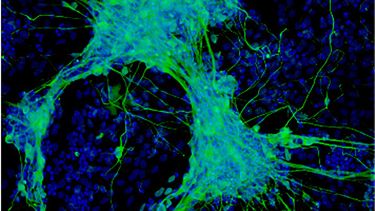The project (CONNECT: “Connecting neural networks: Nervous-system-on-Chip Technology”), which was launched last week with a kick-off meeting in Eindhoven, Netherlands, brings together a wide range of research disciplines aiming to develop a new type of organs-on-a-chip (OoC) for modelling Parkinson’s disease.
What is an OoC
OoC is a case with tubes, called microfluidic channels, which allows experiments to be done on living cells. Well-known examples of OoCs are liver-on-a-chip and heart-on-a-chip. In vitro experiments involving OoCs offer the advantage that they are easy to repeat: unlike animal models such as mice, OoCs are very similar to each other.
This makes it much easier to repeat an experiment. The hope is that with a complete understanding of an organ, researchers will be able to produce a perfectly functioning OoC, in which new drugs can be tested on a large scale.
Developing a nervous-system-on-a-chip
Eindhoven University of Technology (TU/e) is leading this new research consortium aiming at developing a nervous-system-on-a-chip (NoC), which could be used, for example, to test new drugs against Parkinson's disease. It could also help reduce the number of animal experiments, bringing both ethical and practical benefits.
The NoC will connect different types of nerve cells to each other, through three compartments, aiming to mimic the “natural” connections that exist between the central and peripheral nervous system, in the human body.
This will in turn, allow the study of the transport of specific proteins that travel in the nervous system and are associated with Parkinson's disease.
Our role in the project
The role of the University of Sheffield groups in this project is to produce the appropriate peripheral nervous system components, such as enteric neurons, using human pluripotent stem cells (hPSCs) as a starting material.
Other partners include the University of Luxembourg which will be involved in growing organoids from hPSCs, ie structures that mimic specific human brain cells whereas optical and electrophysiological analysis of the resulting nerve cells will be done by KU Leuven (Belgium) and the Erasmus MC (Netherlands) respectively.
AALTO University (Finland) will help with the choice of materials and electrodes for the construction of the NoC while the Oxford Parkinson Disease Center will provide cells from Parkinson's patients for testing. The TU/e researchers will take care of the design and realisation of the NoC.
The project will open the door to personalized medicine approaches involving the rapid testing of candidate drugs directly on patient cells. This will also accelerate the development of new medicines, something that is currently desperately needed, given that a new drug has an average development time of 10 to 12 years and costs about €1.6 billion.

